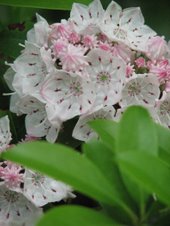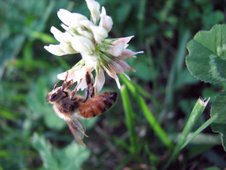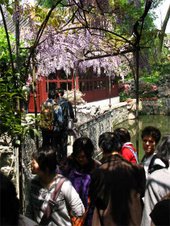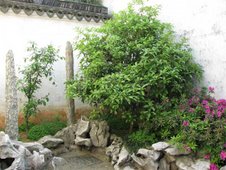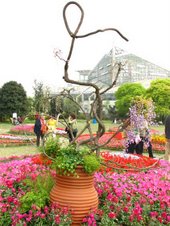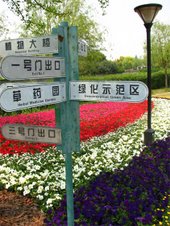We recently experienced a beautiful snow storm. The snow cover will protect your plants from freezing and will provide moisture. Sprinkle bird seed (the birds will love you), sand or kitty litter on icy walks. Do not use salt which will burn your plants and shrubs and will eat away at bricks. Don’t forget to gently scoop fresh snow off boxwoods and evergreens for the snow may freeze and break branches.
Dec. 21st is the Winter Solstice the shortest day and longest night of the year and the official start of winter. With the shorter periods of light plants die or stop producing new growth. Average daily temperature below 43oF (6oC) will also cause plants to stop growth; so the leaves, stems, and flowers die. However, the roots of trees, shrubs and some plants are storing energy for spring growth. Tomorrow, days will start to lengthen; as nights shorten.
Check your plants you have brought into your home for the winter. The plants may harbor insect pests, such as aphids, which will quickly multiply in the warm environment. If you find infestations; wash the plant then spray a non-toxic soap insecticide on your plant.
After weeks of the Xmas frenzy I am ready to nest in my home and read the garden books I’ve been stockpiling all year, but haven’t taken the time to read. So while your garden is resting; envision your dream garden for 2010.
Warm wishes for a peaceful, happy, and healthy Holiday and New Year.
Tuesday, December 22, 2009
Wednesday, November 18, 2009
Preparing for Winter
The holly trees, decorated with red berries, remind us of the approaching holidays. If you have holly trees and no berries; you need a mate – for your holly trees. Hollies are dioecious. The female holly tree bears the berries and the male tree provides the pollen. One male holly tree will serve many female holly trees. If there is nothing better to eat; deer will munch on young holly trees.
Ginkgo trees also are dioecious. The female ginkgo produces a smelly and messy fruit, which is a delicacy in China. The ginkgo has beautiful fan shaped leaves which turns a brilliant yellow after the other tree leaves have already fallen. The falling yellow ginkgo leaves signify the end of colorful autumn.
We have plenty of dead leaves, but only the oak leaves should be used for mulching your garden. Oak leaves are pest resistant and retain moisture. Magnolia and beech leaves should remain under the tree; since they create their own fertilizer. Throw the rest of your leaves on your compost pile.
Are you considering a live Christmas tree this season? Then dig a large hole where you plan to plant your tree after the holidays. Fill the hole with your fallen leaves. When the ground is frozen; you will be thankful you were prepared.
Wisteria should only be fertilized after their leaves have fallen. This will give you more bloom and less growth next year.
Fertilize your bulb beds. Continue to water newly planted bulbs. In order to discourage voles; do not mulch around your bulbs until the ground is frozen.
Don’t sanitize your garden. Though some plants, such as Iris and peony, should be cut back and their dead leaves removed. Also roses should have their fallen leaves removed. However, many perennials are attractive and useful in their dormant state. They provide food and protection for birds and protect new growth. Especially, your chrysanthemums or mums will start to look messy as the flowers fade and the leaves fall, but the old stems will protect new growth. The result will be healthier plants next fall. So leave some of your garden clean-up till spring.
Ginkgo trees also are dioecious. The female ginkgo produces a smelly and messy fruit, which is a delicacy in China. The ginkgo has beautiful fan shaped leaves which turns a brilliant yellow after the other tree leaves have already fallen. The falling yellow ginkgo leaves signify the end of colorful autumn.
We have plenty of dead leaves, but only the oak leaves should be used for mulching your garden. Oak leaves are pest resistant and retain moisture. Magnolia and beech leaves should remain under the tree; since they create their own fertilizer. Throw the rest of your leaves on your compost pile.
Are you considering a live Christmas tree this season? Then dig a large hole where you plan to plant your tree after the holidays. Fill the hole with your fallen leaves. When the ground is frozen; you will be thankful you were prepared.
Wisteria should only be fertilized after their leaves have fallen. This will give you more bloom and less growth next year.
Fertilize your bulb beds. Continue to water newly planted bulbs. In order to discourage voles; do not mulch around your bulbs until the ground is frozen.
Don’t sanitize your garden. Though some plants, such as Iris and peony, should be cut back and their dead leaves removed. Also roses should have their fallen leaves removed. However, many perennials are attractive and useful in their dormant state. They provide food and protection for birds and protect new growth. Especially, your chrysanthemums or mums will start to look messy as the flowers fade and the leaves fall, but the old stems will protect new growth. The result will be healthier plants next fall. So leave some of your garden clean-up till spring.
Saturday, October 24, 2009
October Gardening Notes
October is a good time to plant bulbs, both in your garden and in pots. If planting bulbs in clay soil you should work bone meal, top soil and hardwood mulch into the soil. Use bulb-tone if you have animals which will be attracted to the bone meal and dig up your newly planted bulbs. Do not plant your daffodil bulbs until after the first hard frost. After the second hard frost, plant tulip bulbs. Follow with muscari and crocus bulbs.
For indoor pleasure, force daffodil, tulip, crocus, and hyacinth bulbs. Place your potted bulbs in a dark and cool location until green life appears. Then move to a sunny location where you can enjoy the blooms during the winter gloom. After blooming, let the bulbs dry; then store in a cool dark place. Plant these bulbs in your garden the following spring. Forced paperwhites usually do not bloom after being planted in your garden. However, I still plant them each year. So far with no luck, however, a friend has one batch of paperwhite bulbs which bloom every spring. We think one reason may be that the bulbs are planted close to a black top driveway, which keeps the soil warm in the winter. Do you know how to get paper whites to re-bloom?
October is the time to winterize your roses by applying potassium. Stop deadheading your roses so rose hips can form. The rose hips signal the roses that this is the time to go dormant. Give the roses a final deep water then mulch to protect their soil from freezing.
When the tree leaves start to show color begin to transplant and plant roses, shrubs and trees.
Mid-Oct should be your last fertilizing of shrubs and trees. Only fertilize English box every two or three years.
During the winter your garden mulch will continue to break down, improving the soil’s nutrient value and structure. However, as the shredded bark mulch decomposes it will deplete the nitrogen in your soil. If you used shredded bark as your mulch; you will need to add cottonseed meal or blood meal to your soil. Another way to add nitrogen to your garden is to plant a winter cover crop of clover or rye.
Before the first frost, dig up your sweet potatoes. Also pick your green tomatoes. Put up wind protectors if you have planned a winter veggie garden. Winter veggie gardens are my favorite. No insects. No foraging animals – except deer. Weed less. No sweating.
Enjoy the color of the dying leaves which was brought to us by last weekend’s cold weather.
For indoor pleasure, force daffodil, tulip, crocus, and hyacinth bulbs. Place your potted bulbs in a dark and cool location until green life appears. Then move to a sunny location where you can enjoy the blooms during the winter gloom. After blooming, let the bulbs dry; then store in a cool dark place. Plant these bulbs in your garden the following spring. Forced paperwhites usually do not bloom after being planted in your garden. However, I still plant them each year. So far with no luck, however, a friend has one batch of paperwhite bulbs which bloom every spring. We think one reason may be that the bulbs are planted close to a black top driveway, which keeps the soil warm in the winter. Do you know how to get paper whites to re-bloom?
October is the time to winterize your roses by applying potassium. Stop deadheading your roses so rose hips can form. The rose hips signal the roses that this is the time to go dormant. Give the roses a final deep water then mulch to protect their soil from freezing.
When the tree leaves start to show color begin to transplant and plant roses, shrubs and trees.
Mid-Oct should be your last fertilizing of shrubs and trees. Only fertilize English box every two or three years.
During the winter your garden mulch will continue to break down, improving the soil’s nutrient value and structure. However, as the shredded bark mulch decomposes it will deplete the nitrogen in your soil. If you used shredded bark as your mulch; you will need to add cottonseed meal or blood meal to your soil. Another way to add nitrogen to your garden is to plant a winter cover crop of clover or rye.
Before the first frost, dig up your sweet potatoes. Also pick your green tomatoes. Put up wind protectors if you have planned a winter veggie garden. Winter veggie gardens are my favorite. No insects. No foraging animals – except deer. Weed less. No sweating.
Enjoy the color of the dying leaves which was brought to us by last weekend’s cold weather.
Thursday, October 15, 2009
Climate Change
There are actions we can to do to improve the environment for ourselves, our children, and our grandchildren. Recycling, green gardening, and a decrease in consumerism will improve the water we enjoy, the air we breathe and the stress we experience. It is not necessary to believe in climate change to want to improve life on earth.
Recycle newspaper by using as mulch for garden and by adding to our compost pile.
Add more flowers and vegetables to your lawn to decrease the amount of grass area which demands more work and fertilizer. Use beneficial insects and nematodes rather than toxic insecticides.
Drive less; carpool, bike, and walk more. Support alternative energy: wind mills, solar, and hybrid cars. Support thrift stores, yard sales, and farmers markets.
Today I’m participating in Blog Action Day (Oct. 15th) as one of the numerous ways to help.
Recycle newspaper by using as mulch for garden and by adding to our compost pile.
Add more flowers and vegetables to your lawn to decrease the amount of grass area which demands more work and fertilizer. Use beneficial insects and nematodes rather than toxic insecticides.
Drive less; carpool, bike, and walk more. Support alternative energy: wind mills, solar, and hybrid cars. Support thrift stores, yard sales, and farmers markets.
Today I’m participating in Blog Action Day (Oct. 15th) as one of the numerous ways to help.
Sunday, September 27, 2009
Chiggers cont.
A friend makes a rinse out of water & cider vinegar which she puts on her dogs to wash away chiggers. This rinse remains on the coat. Also beneficial for dog's skin.
If allowed to roam; Guinea hens and chickens eat ticks and chiggers. But then you most be around to care for your fowl.
Shortly winter will take care of the chiggers, which are inactive at temperatures below 60oF and die when ground temperatures fall to 42oF.
If allowed to roam; Guinea hens and chickens eat ticks and chiggers. But then you most be around to care for your fowl.
Shortly winter will take care of the chiggers, which are inactive at temperatures below 60oF and die when ground temperatures fall to 42oF.
Wednesday, August 26, 2009
Tuesday, August 25, 2009
Chiggers & Ticks: ugh!
August is heat and insects. August also is veggies, berries and flowers. I find it hard to harvest the latter when I know I risk chigger and tick bites. Mosquito bites are just a short time annoyance.
As a teenager living on a farm I spent the summer with itchy oozing boils sprinkled on my body. My parents would take me to the country doctor whose response was “I get them also. Maybe we are allergic to tomatoes.” .
I’ve learned that my migraines were sinus infections due to allergies to grasses, animal dander, pollen etc. I’ve outgrown or prevented these problems. But I still get horrible chigger and tick bites and sometimes I don’t want to leave the house except to jump into the car. Deer sleep in my lawn in spite of my dog. I’m surrounded by forest and pasture. I love gardening and weeding but not in August.
I can handle Japanese beetles, hornets, mosquitoes, ants, slugs, etc. but not chiggers or ticks. The first time my dog suffered with Lyme disease. I spread Sevin over a part of the flower garden where she likes to hang out. I’m organic gardener, compost my kitchen and garden wastes and collect rain water. I felt guilty using Sevin, but I was angry.
Thanks to friends and online info I hope to be better prepared for next August.
Chiggers and ticks (and spiders) are Arachnids. Their bite is similar. They both feed on most animals. Chiggers prefer reptiles and birds.
A well groomed yard free of weeds and brush will not attract ticks or chiggers. My yard is full of weeds, bushes, flowers, and veggies.
My dog is on Frontline, but she still gets bitten by ticks and chiggers. These insects also travel on her coat into our home. I’ve started to spray her coat with herbal sprays when she ventures outside. If she is dirty; I wash her with the garden hose before she enter the house. You may find this excessive but I’ve occasionally watched ticks walk up a wall or across the floor of my home.
Because you can see ticks they are easier to deal with than chiggers. If I feel a tick walking along my leg; my fingers quickly grab the insect and drop it in alcohol or the toilet.
Chiggers are microscopic. I’ve suffered many bites, but never seen the biter. Sometimes I feel them crawling on my body, but I think I’m paranoid. Chiggers move very quickly. Chigger bites do not appear until one to three hours after you’ve been bitten. Chiggers do not burrow in your skin. They take a bite (feeding for three or four days), move on and take another bite. Like ticks, they can live in your clothes. If you have been in a possible chigger area; take a hot soapy shower as soon as possible to wash the chiggers off. Immediately throw your clothes in the washing machine for a hot soapy wash.
The same sprays that deter ticks will deter chiggers. Wear boots and spray your outer garments with herbal sprays. One neighbor wraps her ankles with a kerosene soaked rag. Or put dog herbal tick collars around your pant legs (never on your bare skin). However, medical sulfur powder works best for chiggers. Sprinkle on warm, thin skin areas, especially skin folds. Also sprinkle along openings in your clothes and shoes. The powder is cheap and carried in drug stores. Mix with talcum powder to lessen strong odor. To be continued...
As a teenager living on a farm I spent the summer with itchy oozing boils sprinkled on my body. My parents would take me to the country doctor whose response was “I get them also. Maybe we are allergic to tomatoes.” .
I’ve learned that my migraines were sinus infections due to allergies to grasses, animal dander, pollen etc. I’ve outgrown or prevented these problems. But I still get horrible chigger and tick bites and sometimes I don’t want to leave the house except to jump into the car. Deer sleep in my lawn in spite of my dog. I’m surrounded by forest and pasture. I love gardening and weeding but not in August.
I can handle Japanese beetles, hornets, mosquitoes, ants, slugs, etc. but not chiggers or ticks. The first time my dog suffered with Lyme disease. I spread Sevin over a part of the flower garden where she likes to hang out. I’m organic gardener, compost my kitchen and garden wastes and collect rain water. I felt guilty using Sevin, but I was angry.
Thanks to friends and online info I hope to be better prepared for next August.
Chiggers and ticks (and spiders) are Arachnids. Their bite is similar. They both feed on most animals. Chiggers prefer reptiles and birds.
A well groomed yard free of weeds and brush will not attract ticks or chiggers. My yard is full of weeds, bushes, flowers, and veggies.
My dog is on Frontline, but she still gets bitten by ticks and chiggers. These insects also travel on her coat into our home. I’ve started to spray her coat with herbal sprays when she ventures outside. If she is dirty; I wash her with the garden hose before she enter the house. You may find this excessive but I’ve occasionally watched ticks walk up a wall or across the floor of my home.
Because you can see ticks they are easier to deal with than chiggers. If I feel a tick walking along my leg; my fingers quickly grab the insect and drop it in alcohol or the toilet.
Chiggers are microscopic. I’ve suffered many bites, but never seen the biter. Sometimes I feel them crawling on my body, but I think I’m paranoid. Chiggers move very quickly. Chigger bites do not appear until one to three hours after you’ve been bitten. Chiggers do not burrow in your skin. They take a bite (feeding for three or four days), move on and take another bite. Like ticks, they can live in your clothes. If you have been in a possible chigger area; take a hot soapy shower as soon as possible to wash the chiggers off. Immediately throw your clothes in the washing machine for a hot soapy wash.
The same sprays that deter ticks will deter chiggers. Wear boots and spray your outer garments with herbal sprays. One neighbor wraps her ankles with a kerosene soaked rag. Or put dog herbal tick collars around your pant legs (never on your bare skin). However, medical sulfur powder works best for chiggers. Sprinkle on warm, thin skin areas, especially skin folds. Also sprinkle along openings in your clothes and shoes. The powder is cheap and carried in drug stores. Mix with talcum powder to lessen strong odor. To be continued...
Sunday, June 21, 2009
Summer Solstice
Today is the Summer Solstice. In the northern hemisphere this is the longest day and shortest night of the year. Some of your may celebrate by gathering herbs or performing 108 yoga sun salutations. I’m enjoying the day by watching the birds out my window while I write.
I’ve missed writing my blog entries due to fighting several auto- immune diseases which may become a future blog.
Each spring I plant veggies and by summer lose them to the rabbits, deer, groundhogs and squirrels. This summer I’ve already lost chard, raspberry, cucumber, and sunflower plants. Even though, I planted them in my high double fence garden. So I’m trying to be more sustainable by eating native “weeds”, such as dandelion, mustard and violet flowers and leaves, and plantain. I also grow herbs, such as arugula, basil, cilantro, sage, parsley, mint, and chives which easily reseed and are not eaten by the above animals. So far I haven’t had a lot of luck with rosemary though my lavender does well. My stevia plant I must take inside each winter.
My dog and I are constantly scaring the squirrels from the bird feeder. However, flying squirrels seem magical. A flying squirrel family lives in a blue bird house. About twice a year I check the box and am pleasantly surprised when one jumps out. Last week the flying squirrel did not disappear, but flatten herself on the pole above the box. I assume this was because she had babies inside.
With all the rain we’ve had this spring and early summer I feel like I’m in the jungle. My flowers are lovely and lush. I grow flowers that are easy to care for and not eaten by animals. Such as daisy, echinacea, black eye susan, aster, cornflower, dianthus, gladiolas, iris, daffodil, peony, hellebores, mullein, red hot poker and yucca. I plant tulips amongst the daffodils, which protect them from munching deer. Only the lilies next to my house are usually untouched. My butterfly bush grew up above my porch so I cut the large trunk to four inches from the ground this winter. The bush is growing back and producing flowers.
Native “weed” flowers such as mulberry and milkweed also grow in my garden. Clover grows in my lawn. Several weed flowers, such as false strawberry and ragweed require year round weeding or they will take over my yard and gardens.
I’ve been squashing beautiful florescent green beetles which are munching on my plants.
Some shrubs are so prolific that grazing deer prune but don’t destroy. My mock orange bushes, burning bush and nadines always look great. I need to put a net on my small blueberry bushes which have not been bothered until this summer. Something is eating berries along with the branches.
Please contact me if you can suggest other veggies or herbs which are not eaten by animals.
I’ve missed writing my blog entries due to fighting several auto- immune diseases which may become a future blog.
Each spring I plant veggies and by summer lose them to the rabbits, deer, groundhogs and squirrels. This summer I’ve already lost chard, raspberry, cucumber, and sunflower plants. Even though, I planted them in my high double fence garden. So I’m trying to be more sustainable by eating native “weeds”, such as dandelion, mustard and violet flowers and leaves, and plantain. I also grow herbs, such as arugula, basil, cilantro, sage, parsley, mint, and chives which easily reseed and are not eaten by the above animals. So far I haven’t had a lot of luck with rosemary though my lavender does well. My stevia plant I must take inside each winter.
My dog and I are constantly scaring the squirrels from the bird feeder. However, flying squirrels seem magical. A flying squirrel family lives in a blue bird house. About twice a year I check the box and am pleasantly surprised when one jumps out. Last week the flying squirrel did not disappear, but flatten herself on the pole above the box. I assume this was because she had babies inside.
With all the rain we’ve had this spring and early summer I feel like I’m in the jungle. My flowers are lovely and lush. I grow flowers that are easy to care for and not eaten by animals. Such as daisy, echinacea, black eye susan, aster, cornflower, dianthus, gladiolas, iris, daffodil, peony, hellebores, mullein, red hot poker and yucca. I plant tulips amongst the daffodils, which protect them from munching deer. Only the lilies next to my house are usually untouched. My butterfly bush grew up above my porch so I cut the large trunk to four inches from the ground this winter. The bush is growing back and producing flowers.
Native “weed” flowers such as mulberry and milkweed also grow in my garden. Clover grows in my lawn. Several weed flowers, such as false strawberry and ragweed require year round weeding or they will take over my yard and gardens.
I’ve been squashing beautiful florescent green beetles which are munching on my plants.
Some shrubs are so prolific that grazing deer prune but don’t destroy. My mock orange bushes, burning bush and nadines always look great. I need to put a net on my small blueberry bushes which have not been bothered until this summer. Something is eating berries along with the branches.
Please contact me if you can suggest other veggies or herbs which are not eaten by animals.
Subscribe to:
Posts (Atom)






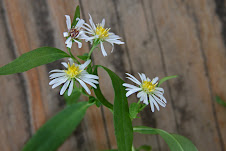












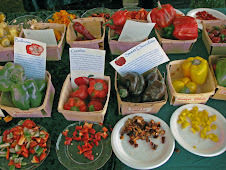LP_gardening_2666.jpg)
LP_gardening_2668.jpg)

LP_garden_2819.jpg)

LP_flower_0563.jpg)
LP_flower_0577.jpg)
LP_flower_0545.jpg)
LP_flower_0555.jpg)
LP_flower_0539.jpg)
LP_dog_0470.jpg)
LP_snow_0467.jpg)
LP_dog_0349.jpg)
LP_tree_8153.jpg)
LP_5028.jpg)
LP_flowers_3940.jpg)

LP-grass_0889.jpg)
LP_redfox_1651.jpg)
LP_squirrel_6978.jpg)
LP_flower_6936.jpg)
LP_squirrel_6864.jpg)
LP-deer_4773.jpg)
LP_4521.jpg)
LP_1251.jpg)
LP_4585.jpg)
LP_3784.jpg)
LP_3759.jpg)
LP_3811.jpg)
LP_3816.jpg)
LP_3847.jpg)
LP_0870.jpg)
LP_4183.jpg)
LP_0891.jpg)
LP_3175.jpg)
LP_3577.jpg)

LP_3068.jpg)
LP_3058.jpg)
LP_3562.jpg)
LP_0118.jpg)
LP_3407.jpg)
LP_3150.jpg)
LP_3011+(2).jpg)
LP_3020.jpg)
LP_2830.jpg)
LP_2782.jpg)
LP_2828.jpg)
LP_1746.jpg)
LP_2648.jpg)
LP_2666.jpg)
LP_2668.jpg)
LP_2493.jpg)
LP_2611crop.jpg)
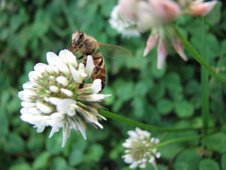
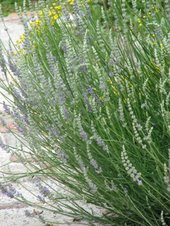
LP_2588.jpg)

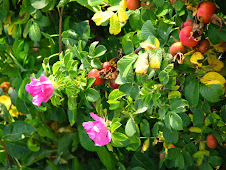
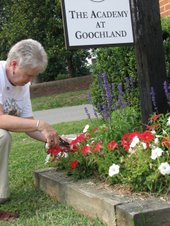


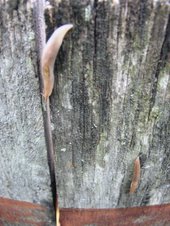
LP_2126.jpg)
LP_2122.jpg)
